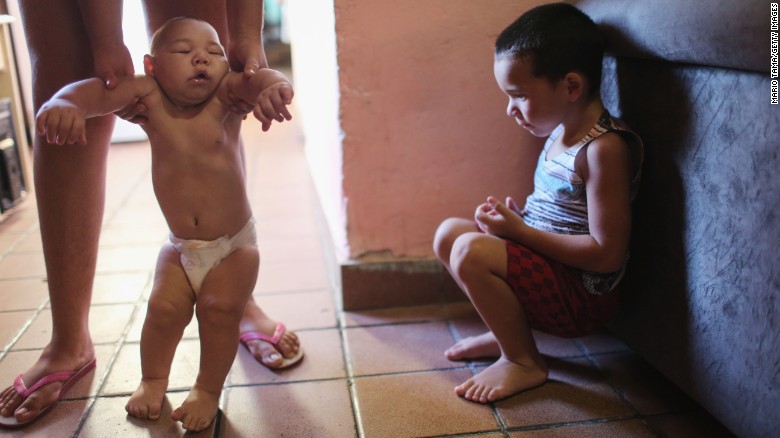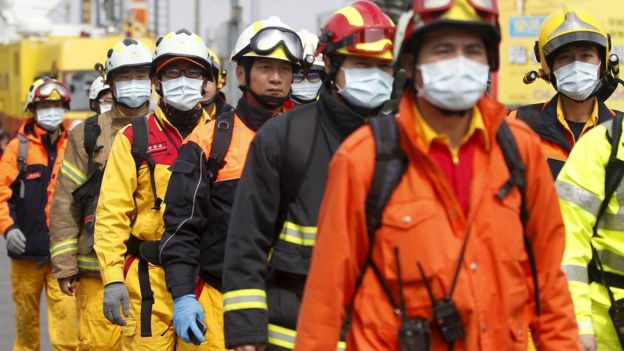By Sandee LaMotte, CNN
Updated 2254 GMT (0654 HKT) January 27, 2016


The Zika virus, transmitted by the aggressive Aedes aegypti mosquito,
has now spread to at least 24 countries.
The Centers for Disease Control and Prevention is warning pregnant
women against travel to those areas; health officials in several of
those countries are telling female citizens to avoid becoming pregnant,
in some cases for up to two years.
The
U.S. Defense Department is offering voluntary relocation to pregnant
employees and their beneficiaries who are stationed in affected areas.
"That's a pandemic in progress," said Dr. Anthony Fauci, director of the
National Institute of Allergy and Infectious Diseases
at the National Institutes of Health. "It isn't as if it's turning
around and dying out, it's getting worse and worse as the days go by."
Here are five important things to know:
1. What is Zika and why is it so serious?
The
Zika virus is a flavivirus, part of the same family as yellow fever,
West Nile, chikungunya and dengue. But unlike some of those viruses,
there is no vaccine to prevent Zika or medicine to treat the infection.
Zika
is commanding worldwide attention because of an alarming connection
between the virus and microcephaly, a neurological disorder that results
in babies being born with abnormally small heads. This causes severe
developmental issues and sometimes death.
Since
November, Brazil has seen 4,180 cases of microcephaly in babies born to
women who were infected with Zika during their pregnancies. To put that
in perspective, there were only 146 cases in 2014. So far, 51 babies
have died.
Other Latin American countries are now seeing cases in newborns as well, while in the United States one
Hawaiian baby
was born with microcephaly linked to the Zika virus after his mother
returned from Brazil. Several states have confirmed the virus in
individuals who traveled to areas where the virus is circulating,
including Illinois, where health officials are monitoring
two infected pregnant women.
The
CDC is asking OB-GYNs to review fetal ultrasounds and do maternal
testing for any pregnant woman who has traveled to one of the 24
countries where Zika is currently active.
A
smaller outbreak of Guillain-Barre syndrome, a rare autoimmune disorder
that can lead to life-threatening paralysis, is also linked to Zika in a
several countries.
2. How is Zika spread?
The virus is transmitted when an Aedes mosquito
bites a person with an active infection and then spreads the virus by
biting others. Those people then become carriers during the time they
have symptoms.
In
most people, symptoms of the virus are mild, including fever, headache,
rash and possible pink eye. In fact, 80% of those infected never know
they have the disease. That's especially concerning for pregnant women,
as this virus has now been shown to pass through amniotic fluid to the
growing baby.
"What we now know," said
Dr. Lyle Petersen, director of the CDC's Division of Vector-Borne
Diseases, "is that fetuses can be infected with the virus. That's not
new for infectious diseases, but it is new for this virus."
"This
is a very remarkable and unusual situation," agreed Fauci, "because the
other flaviviruses don't do that to our knowledge. You just don't see
that with dengue or West Nile or chikungunya."
In addition, the CDC says there have been documented cases of virus transmission during
labor, blood transfusion, laboratory exposure and
sexual contact. While Zika has been found in breast milk, it's not yet confirmed it can be passed to the baby through nursing.
There have been only two documented cases linking Zika to sex. During the 2013 Zika outbreak in French Polynesia,
semen and urine samples
from a 44-year-old Tahitian man tested positive for Zika even when
blood samples did not. Five years before that, in 2008, a Colorado
microbiologist named Brian Foy
contracted Zika after travel to Senegal;
his wife came down with the disease a few days later even though she
had not left northern Colorado and was not exposed to any mosquitoes
carrying the virus.
3. Where is the Zika virus now?
The
Zika virus is now being locally transmitted in Barbados, Bolivia,
Brazil, Cape Verde, Colombia, Dominican Republic, Ecuador, El Salvador,
French Guiana, Guadeloupe, Guatemala, Guyana, Haiti, Honduras,
Martinique, Mexico, Panama, Paraguay, Puerto Rico, Saint Martin,
Suriname, Samoa, the U.S. Virgin Islands and Venezuela, says the CDC.
Zika
has arrived in the United States, but only from travelers returning
from these infected areas. The concern, of course, is whether these
imported cases could result in locally transmitted cases within the
United States.
The Aedes albopictus,
or Asian tiger mosquito, which along with Aedes aegypti transmits Zika
virus, is present in many areas of the United States.
If mosquitoes in the United States do become carriers, a model created by Toronto researchers found more than
63% of the U.S. population lives in areas where Zika virus might spread during seasonally warm months.
A little over 7% of Americans live in areas where the cold might not
kill off the mosquito in the winter, leaving them vulnerable year round.
4. What can you do to protect yourself against Zika?
With
no treatment or vaccine available, the only protection against Zika is
to avoid travel to areas with an active infestation. If you do travel to
a country where Zika is present, the
CDC advises
strict adherence to mosquito protection measures: Use an EPA-approved
repellent over sunscreen, wear long pants and long-sleeved shirts thick
enough to block a mosquito bite, and sleep in air-conditioned, screened
rooms, among others.
If
you have Zika, you can keep from spreading it to others by avoiding
mosquito bites during the first week of your illness, says the CDC. The
female Aedes aegypti, the primary carrier of Zika, is an aggressive
biter, preferring daytime to dusk and indoors to outdoors. Keeping
screens on windows and doors is critical to preventing entry to homes
and hotel rooms.
5. What's being done to stop Zika?
Researchers
are hard at work in laboratories around the world trying to create a
Zika vaccine. Until those efforts bear fruit, health officials are
implementing traditional mosquito control techniques such as spraying
pesticides and emptying standing water receptacles where mosquitoes
breed. The CDC is encouraging local homeowners, hotel owners and
visitors to countries with Zika outbreaks to join in by also eliminating
any standing water they see, such as in outdoor buckets and flowerpots.
Studies
show local control is only marginally effective, since it's so hard to
get to all possible breeding areas. And since Aedes aegypti has
evolved to live near humans and "can replicate in flower vases and
other tiny sources of water," said microbiologist Brian Foy, the
mosquitoes are particularly difficult to find and eradicate.
Another
prevention effort is OX513A, a genetically modified male Aedes aegypti,
dubbed by critics as the "mutant mosquito" or "Robo-Frankenstein
mosquito." The creation of British company Oxitec, OX513A is designed to
stop the spread of Zika by passing along a gene that makes his
offspring die. Since females only mate once, in theory this slows the
growth of the population. Each OX513A carries a fluorescent marker, so
he can be tracked by scientists.
Key
West, Florida, residents gave the genetically modified male his monster
nicknames while protesting a trial release of the mosquito in 2012 as a
way to combat an outbreak of dengue fever in South Florida. That effort
is under review by the Food and Drug Administration.
But field trials in Brazil in 2011 were hugely successful,
according to Oxitec,
eliminating up to 99% of the target population. A new release of males
in the Pedra Branca area of Brazil in 2014 was 92% successful, according
to the company. The mosquito has also been tested in the Cayman
Islands, Malaysia and Panama.
Last
year, Oxitec announced plans to build an OX513A mosquito production
facility in Piracicaba, Brazil, that it says will be able to protect
300,000 residents.
 Image caption
The earthquake, classified as severe, lasted less than 30 seconds3
Image caption
The earthquake, classified as severe, lasted less than 30 seconds3

















